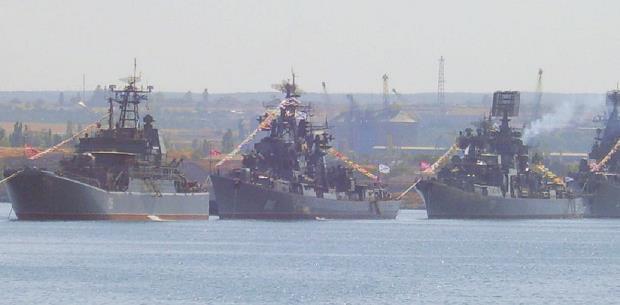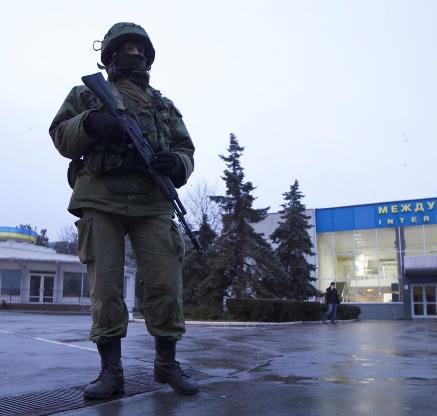The Ukrainian Crisis, A Political Tightrope
The principal rationale of the Russian military intervention was to protect its citizens and armed forces in the Ukraine. However, Russia’s motives come under intense scrutiny since the Crimean peninsula is the staging ground for the Black Sea Fleet of the Russian Navy, and is home to a number of strategically crucial Russian military bases. Currently, the Russian military has overpowered local Ukrainian forces by seizing complete control of the Crimean peninsula. Western nations generally view the intervention as a violation of Ukraine’s sovereignty, since it is not mandated by the United Nations (UN) Security Council, nor does Russia have any credible humanitarian rationale to deploy its forces to foreign soil.
On February 26, Russian President Vladimir Putin issued military exercises to inspect the combat readiness of the Russian Armed Forces stationed in western Russia. Soon after this order, which were in fact the opening days of Russian military intervention, Crimea witnessed a surge of unidentified servicemen establishing a military presence in the peninsula. These servicemen, dressed in khakis and lacking the necessary identifications and markings such as name tapes, rank insignias, or unit patches, immediately seized control of Crimea-based Ukrainian military installations. These servicemen were later identified as special operators of the 45th Detached Reconnaissance Regiment. As of March 10, the Russian forces seized 13 Ukrainian military installations.

Despite the dissolution of the Soviet Union, Russia was determined to maintain a naval presence in the Black Sea despite the fact that its former naval bases now belonged to a different country. Russia and Ukraine converged to an agreement to share Ukraine’s naval bases on a lease contract. Renewed in 2010, the new contract is due to expire no sooner than 2042. Russia’s unwavering resolve to maintain a naval presence in the Black Sea is due to Russia’s austere geographical terrain. As such, warm deep-water ports are of critical strategic value for the Russian Navy. A naval base in Sevastopol that Russia currently leases from Ukraine is a key strategic installation that provides Russia consistent force projection capabilities all year round.
The Black Sea Fleet, primarily stationed in Crimea, is an 11,000 men force, currently commanded by Vice Admiral Aleksandr Vitko. Due to its strategic location, the Black Sea Fleet provides not only blue-water capabilities but also an unchallenged regional influence, despite its relatively unimpressive naval strength. It consists of 25 ships, mostly commissioned by the former Soviet Union and 19 of which are small corvettes and patrol vessels. Since 2008, Russia has appropriated the Black Sea Fleet to pacify regional threats. It proved to be a valuable asset during the Russo-Georgian War, and has actively deployed ships to Vietnam, Syria, and Venezuela.
Western nations have vehemently chastised Russia’s actions under the context of international law. International law has an innate tendency to preserve territorial integrity, unless the residents of the territory in question are suffering from human rights violations or denial of self-determination from the central government. Russia has recognized Ukrainian sovereignty and its subsidiary territories on several occasions, such as the Alma Ata Declaration of 1991 and the Budapest Memorandum of 1994. For the Crimean case, Russia legitimizes its invasion as a humanitarian intervention, under the pretense of protecting Crimean Russians. However, Russia is deploying its armed forces on foreign soil with neither consent nor humanitarian cause, and thus, it is generally recognized as a violation of sovereignty of the nation in question.

There have been instances where a nation’s sovereign territory was invaded without the approval of the UN Security Council: namely, the Kosovo War, where North Atlantic Treaty Organization (NATO) forces intervened without UN approval. The Russian military intervention has been commonly compared to the NATO intervention during the Kosovo War. However, the intervention was conducted only after mass murders of Bosnian Muslims were discovered and persecution of Albanians. Furthermore, the NATO action was a last resort, after years of unsuccessful attempted negotiations, sanctions, and warnings. In the current situation, no grave human rights violations, mass murders, or any other justification to deploy military forces on foreign sovereign soil has yet to take place. As such, the West largely considers deployment of the Russian military to be an unwarranted act of aggression against Ukraine’s sovereignty.
Three weeks after the intervention, Russia holds complete military control over the Republic of Crimea, supported an overwhelming array of sea, air, and ground assets. Russia has deployed over 25,000 troops, over 30 warships, and 4 fighter squadrons. Ukraine, on the other hand, committed around 15,000 troops and 10 warships. Thus far, only a handful of casualties, including a Ukrainian officer that was killed in action, were reported. However, amidst the controversial Crimean referendum, whether or not the two powers will engage in further hostilities remains to be seen.
Min Kyu Choi
scentimentality@gmail.com

